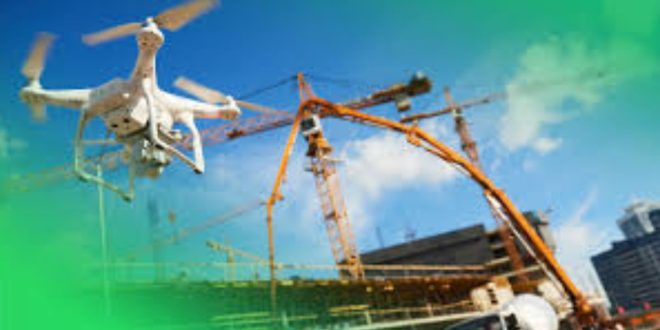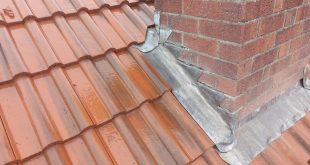In an age where technology continuously reshapes industries, construction project management stands at the forefront of this evolution. One of the most groundbreaking innovations in recent years is the use of drone mapping services. These services are revolutionizing how construction projects are planned, executed, and managed, offering numerous benefits that enhance efficiency, accuracy, and safety. This article explores how drone mapping services are transforming construction project management, their benefits, and the future of this technology in the industry.
Understanding Drone Mapping Services
Drone mapping service utilize unmanned aerial vehicles (UAVs) equipped with advanced cameras and sensors to capture high-resolution images and data from construction sites. These drones can cover large areas quickly, providing a comprehensive view of the site and generating detailed maps and models.
Using photogrammetry, these services convert 2D images into 3D models, offering stakeholders a visual representation of the construction site. This technology allows for precise measurements, volume calculations, and a detailed understanding of the terrain, which is crucial for project planning and execution.
Benefits of Drone Mapping Services in Construction
1. Enhanced Accuracy and Precision
One of the primary advantages of drone mapping services is the level of accuracy they provide. Traditional surveying methods can be time-consuming and prone to human error. Drones, on the other hand, can capture millions of data points in a matter of hours, resulting in highly accurate maps and models.
These detailed maps allow project managers to make informed decisions based on precise measurements and real-time data. This accuracy is particularly valuable during the planning phase, where precise site analysis can prevent costly mistakes and project delays.
2. Improved Project Monitoring
Construction projects are often dynamic environments that require constant monitoring to ensure they stay on track. Drone mapping services facilitate this by providing regular aerial surveys of the site. Project managers can track progress visually, compare it against project timelines, and identify any discrepancies early on.
This capability allows for timely interventions when issues arise, ensuring that projects remain within budget and on schedule. Regular monitoring also improves communication among stakeholders, as everyone can access the latest aerial images and data.
3. Cost-Effectiveness
Implementing drone mapping services can lead to significant cost savings in construction project management. Traditional surveying methods often require extensive manpower and equipment, leading to higher labor costs. Drones can perform these tasks more quickly and efficiently, reducing the time spent on site.
Additionally, the high level of accuracy provided by drone mapping minimizes costly errors and rework. By identifying potential issues early in the project lifecycle, teams can avoid expenses associated with delays and corrections, ultimately improving the project’s bottom line.
4. Safety and Risk Mitigation
Safety is paramount in the construction industry, and drone mapping services contribute significantly to enhancing site safety. Drones can access hard-to-reach or hazardous areas without putting personnel at risk. This capability allows for thorough inspections and assessments of the site, identifying potential safety concerns before they become critical issues.
Moreover, the aerial perspective provided by drones helps project managers visualize site conditions better, leading to improved safety protocols and risk mitigation strategies. By keeping workers out of danger zones during inspections, companies can foster a safer work environment.
Related Article: The Benefits of Aerial Mapping Services for Construction Projects
5. Streamlined Communication and Collaboration
Effective communication is essential in construction project management. Drone mapping services facilitate collaboration among various stakeholders, including project managers, architects, engineers, and clients. Aerial imagery and data can be easily shared with all parties, ensuring everyone is on the same page regarding project progress and site conditions.
This transparency fosters a collaborative atmosphere where stakeholders can provide input and feedback based on the latest data, ultimately leading to better decision-making and project outcomes.
6. Efficient Data Collection and Analysis
The volume of data collected by drones is substantial, and the ability to analyze this data quickly is invaluable. Advanced software solutions can process drone-captured images and generate 3D models and maps in real-time. This capability allows project managers to gain insights into site conditions and project status swiftly.
By integrating drone mapping data with other construction management software, teams can create a comprehensive view of the project, improving planning, execution, and monitoring processes.
Case Studies: Real-World Applications of Drone Mapping Services
1. Infrastructure Development
In the realm of infrastructure development, drone mapping services have been a game-changer. A notable example is the construction of highways and bridges, where extensive land surveying is required. Traditional methods can be time-consuming and labor-intensive, but using drones has significantly reduced the time needed for site assessments.
For instance, during the construction of a new highway, a construction firm utilized drone mapping to survey the entire stretch quickly. The resulting data allowed for accurate modeling of the terrain and identification of potential challenges, such as drainage issues. As a result, the project stayed on schedule and within budget, showcasing the efficiency of drone mapping services.
2. Residential Construction
Drone mapping services have also found applications in residential construction projects. A real estate developer used drone technology to survey a large tract of land for a new housing development. The high-resolution aerial images provided insights into the land’s topography, vegetation, and existing infrastructure.
By using drone mapping data, the developer could create accurate site plans and visualize how the housing project would fit within the landscape. This not only aided in obtaining necessary permits but also improved communication with local authorities and stakeholders, leading to a smoother approval process.
3. Disaster Recovery and Assessment
After natural disasters, drone mapping services can play a critical role in recovery efforts. Following a hurricane, for instance, emergency management teams deployed drones to assess the damage across affected areas. The aerial imagery captured provided a comprehensive view of the destruction, enabling teams to prioritize response efforts effectively.
By utilizing drone mapping services for post-disaster assessments, agencies can allocate resources more efficiently, ensuring that aid reaches the most affected areas swiftly. This application highlights the versatility and importance of drone technology beyond traditional construction projects.
Related Article: Unlock Global Success with Professional International SEO Service
The Future of Drone Mapping Services in Construction
As drone technology continues to advance, the future of drone mapping services in construction project management looks promising. Here are some potential developments to watch for:
1. Integration with Building Information Modeling (BIM)
The integration of drone mapping services with Building Information Modeling (BIM) is likely to become more prevalent. By combining aerial data with detailed digital models, construction teams can gain a holistic view of projects, enabling better planning and execution.
This synergy will facilitate real-time updates to project plans, allowing for agile responses to changes and unforeseen challenges. The result will be enhanced project outcomes and improved collaboration among stakeholders.
2. Enhanced Automation and AI Integration
As artificial intelligence (AI) and machine learning continue to evolve, their integration into drone mapping services will streamline data analysis. AI algorithms can process vast amounts of data quickly, identifying patterns and anomalies that may go unnoticed by human operators.
This enhanced automation will enable construction teams to make data-driven decisions faster, ultimately improving project management efficiency and effectiveness.
3. Expanded Use in Sustainability Efforts
Sustainability is a growing concern in the construction industry, and drone mapping services can contribute significantly to eco-friendly practices. Drones can assess environmental impacts, monitor site conditions, and track vegetation changes during construction.
By utilizing drone mapping for sustainability assessments, construction companies can minimize their ecological footprint and comply with regulations more effectively. This focus on sustainability aligns with the industry’s broader goals of reducing waste and promoting responsible construction practices.
4. Advancements in Drone Technology
As drone technology continues to advance, the capabilities of drone mapping services will expand. Improved sensors, longer flight times, and enhanced data processing capabilities will make drones even more valuable in construction project management.
Future developments may include the use of LiDAR (Light Detection and Ranging) technology, which allows for highly detailed terrain mapping and analysis. This technology will provide even more accurate data for construction projects, further improving planning and execution processes.
Conclusion
Drone mapping services are undeniably transforming construction project management, offering unparalleled accuracy, efficiency, and safety. From enhancing project monitoring to streamlining communication among stakeholders, the benefits of utilizing drone technology are evident. As the industry continues to embrace this innovation, it will pave the way for a more efficient and sustainable construction process.
With advancements in technology and the integration of drone mapping with other construction management tools, the future holds even greater promise. Construction firms that harness the power of drone mapping services will not only improve their project outcomes but also position themselves as leaders in an increasingly competitive industry. As we look ahead, embracing this technology will be essential for staying ahead in the ever-evolving construction landscape.
 Diverse Perspectives: Insights & Stories Exploring Ideas, Sharing Knowledge
Diverse Perspectives: Insights & Stories Exploring Ideas, Sharing Knowledge





